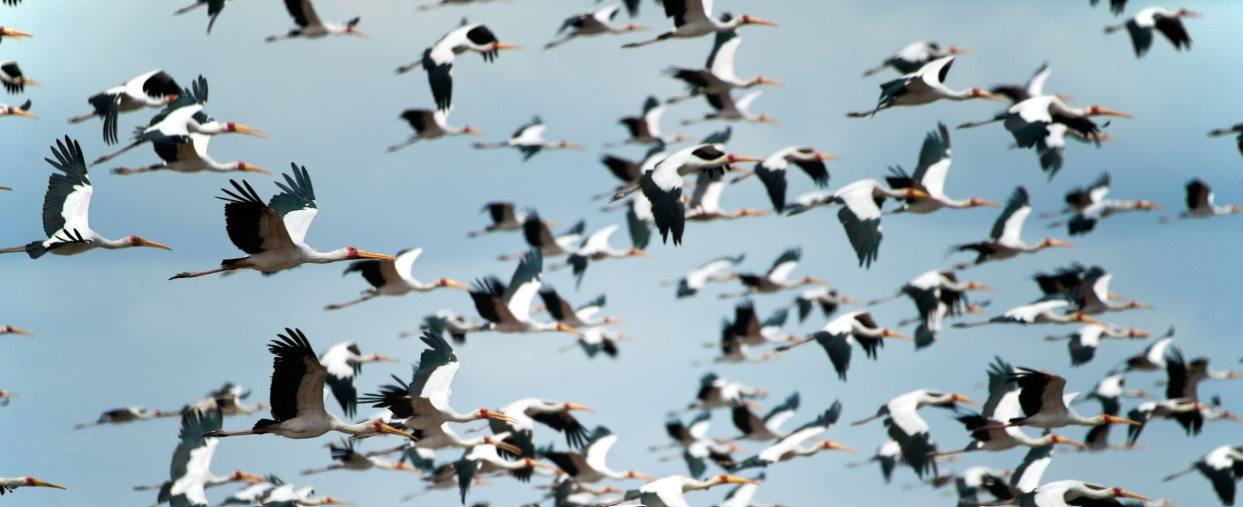The Best Time for Bird Migration Sightings in Tanzania
November to April, Tanzania is a birdwatcher’s paradise, boasting over 1,100 bird species, including numerous migratory birds that visit the country seasonally. The best time for bird migration sightings in Tanzania depends on various factors, including weather patterns, breeding cycles, and food availability. This article explores the optimal periods for observing migratory birds in Tanzania, highlighting key locations, species, and tips for birdwatching enthusiasts.
Understanding Bird Migration in Tanzania from November to April
Bird migration is a natural phenomenon where birds travel long distances between breeding and non-breeding grounds. Tanzania, with its diverse ecosystems—ranging from savannas and wetlands to forests and coastal regions—serves as a crucial stopover and wintering destination for many migratory species.
There are two primary migration seasons in Tanzania:
-
The Palearctic Migration (October–April) – Birds from Europe and Asia escape the northern winter and migrate to Africa.
-
The Intra-African Migration (November–May) – Birds from other parts of Africa move to Tanzania in search of favorable conditions.
Best Time for Bird Migration Sightings are in November to April
The ideal time for bird migration sightings in Tanzania is between November and April, coinciding with the rainy season (short rains from November–December and long rains from March–May). During this period, food is abundant, and many migratory species are present. However, different months offer unique birdwatching opportunities.
1. November–December: Arrival of Palearctic Migrants
As the short rains begin, Tanzania welcomes the first wave of migratory birds from Europe and Asia. Key species include:
-
European Bee-eaters
-
Eurasian Rollers
-
Yellow Wagtails
-
Barn Swallows
Best Locations:
-
Serengeti National Park – Open grasslands attract raptors and insectivorous birds.
-
Lake Manyara – A haven for waterbirds and flamingos.
-
Arusha National Park – Forests and lakes host a mix of resident and migratory species.

2. January–February: Peak Migration Season
This period sees the highest diversity of migratory birds, as both Palearctic and intra-African migrants are present. The weather is warm, and water sources are plentiful, making it ideal for birdwatching.
Notable Species:
-
White Storks
-
Black Kites
-
Lesser Spotted Eagles
-
African Pitta (intra-African migrant)
Best Locations:
-
Selous Game Reserve – Wetlands attract storks, herons, and kingfishers.
-
Ruaha National Park – Riverine forests host rare migrants.
-
Pangani River Basin – A hotspot for waders and terns.
3. March–April: Raptor Migration & Wetland Birds
As the long rains begin, raptors and wetland birds dominate the migration scene. This is also the breeding season for many species, making it a great time to observe courtship displays.
Key Species:
-
Steppe Eagles
-
Amur Falcons
-
Sooty Falcons
-
Greater Flamingos
Best Locations:
-
Lake Natron – Breeding ground for flamingos.
-
Tarangire National Park – Large flocks of birds gather around swamps.
-
Usambara Mountains – Endemic and migratory species thrive here.
4. May–October: Resident Birds & Few Migrants
While this is the dry season and most migratory birds have left, some intra-African migrants remain. Resident bird species are more visible due to sparse vegetation.
Best Locations:
-
Ngorongoro Crater – Home to ostriches, kori bustards, and secretary birds.
-
Mikumi National Park – Open savannas attract raptors and hornbills.
Top Birdwatching Destinations in Tanzania from November to April
1. Lake Manyara National Park
Famous for its tree-climbing lions, Lake Manyara is also a birding hotspot with over 400 species, including migratory flamingos, pelicans, and storks.
2. Serengeti National Park
While known for the Great Migration, the Serengeti also hosts raptors like the Lesser Spotted Eagle and European Roller.
3. Selous Game Reserve
A UNESCO World Heritage Site, Selous is home to fish eagles, carmine bee-eaters, and African skimmers.
4. Udzungwa Mountains National Park
A biodiversity hotspot with endemic species like the Udzungwa partridge and migratory forest birds.
5. Rubondo Island National Park
Located on Lake Victoria, this island sanctuary is excellent for spotting African fish eagles, herons, and cormorants.
Tips for Birdwatching in Tanzania
-
Hire a Knowledgeable Guide – Local bird guides can help identify rare species and their calls.
-
Carry Binoculars and a Field Guide – Essential for spotting and identifying birds.
-
Visit Early Morning or Late Afternoon – Birds are most active during these times.
-
Respect Wildlife Habitats – Avoid disturbing nesting sites.
-
Keep a Birding Checklist – Helps track sightings and rare species.
The best time for bird migration sightings in Tanzania is November to April, with peak activity between January and March. Whether you’re a casual birdwatcher or a dedicated ornithologist, Tanzania’s diverse landscapes offer unparalleled opportunities to witness spectacular avian migrations. By visiting key national parks, wetlands, and forest reserves, you can experience one of Africa’s most thrilling birdwatching adventures.
Plan your trip during the wet season, pack your binoculars, and prepare to be amazed by Tanzania’s incredible birdlife!










